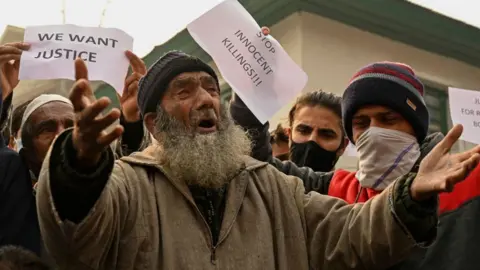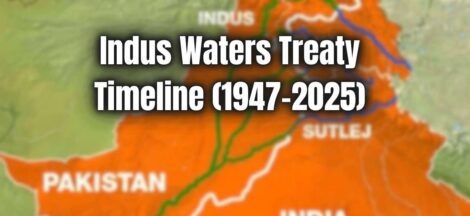The future of the Naxalite movement has always been the most exasperating topic for discussion in political circle. Long back the rightist and even centrist liberals have written the obituary of the movement. But even then it continues to survive and spread during the last sixty years notwithstanding the state perpetrating worst kind of repression and gunning down hundreds of its top and senior leaders.
Union Home Minister Amit Shah is confident of eliminating Naxalism by March 2026. For him the killing of Keshav Rao alias Basavraju, general secretary of the CPI(Maoist) is a decisive blow in a decade long conflict. It is nonetheless confession of the fact that it took ten years for state to track and kill Basavraju in Chhattisgarh, along with his other 27 comrades. Shah has been quite ebullient at the killing, as Basavraju was the general-secretary of the banned CPI(Maoist) and the “topmost leader and the backbone” of the Naxal movement.
Shah’s enthusiasm manifests a definite politico-ideological dimension when he claimed; “This is the first time in three decades of Bharat’s battle against Naxalism that a general-secretary-ranked leader has been neutralised by our forces”. Instead of mentioning India, he preferred to use Bharat. He wanted to differentiate the security action taken against the Maoists during Modi Raj with that of the actions taken in the past governments.
The question which he could not reply is, why the state notwithstanding resorting to colossal fire power has failed to stop sprouting of fresh and new leaders. Their emergence is something akin to mythological birth of Raktabija. The translation of the Hindi word “raktabija” is “blood seed” or “blood offspring.” In Hindu mythology, “raktabija” refers to a demon whose blood was a source of more demons, creating a powerful and seemingly insurmountable army.
Nevertheless the general secretary of the CPI(ML) Liberation Dipankar Bhattacharya described it as cold-blooded extra-judicial killing of the General Secretary of CPI(Maoist) Keshav Rao and other Maoist activists and Adivasis in Narayanpur-Bijapur.
What has been significant to note, he said: “From the celebratory post of Union Home Minister Amit Shah, it is clear that the state is spearheading Operation Kagar as an extra-judicial extermination campaign and taking credit for killing citizens and suppressing Adivasi protests against corporate plunder and militarisation in the name of combating Maoism.”
The CPI(ML) Liberation has also appealed to all justice-loving Indians to insist on a judicial probe into the massacre and demand an immediate end to the military operation, especially when the Maoists have declared a unilateral ceasefire. Indeed it is a matter of grave concern that Shah has been directing the operation against Maoists when they are in the phase of ceasefire.
Bhattacharya however is sure of the movement being an Adivasi issue. He said: “as far as Maoists are concerned the only demand should be to halt the military operation and start dialogue as suggested by the Peace Committee of Bastar. In the midst of the police operation, precisely on the 7th Day of the police operation the Peace Committee had met the Telangana chief minister and urged him to persuade the central government for ceasefire.
Peace talks committee convenor Justice Chandrakumar, Professor Hargopal, Anwar Khan, Durga Prasad, Janpanna and Ravi Chander met CM Revant Reddy. In anticipation of some positive word from the government many Naxal leaders were also present on Karregutta, a range of small hills extending for over 290 kms across Chhattisgarh, Maharashtra and Telangana.
Chhattisgarh government too initially had agreed for unconditional peace talks with the Maoists: “if they want to return to the mainstream”, Chhattisgarh Home Minister Vijay Sharma said last week, after two days of receiving second letter from the Maoists which requested the government to halt the military operation. In a press release on April 8, the North-West Sub-Zonal Bureau of the CPI (Maoist) said that “while the party is not averse to peace negotiations, the current conditions in Bastar—marked by ongoing killings and security operations—make talks practically impossible”. Ironically while the Maoists were waiting for government clearance to hold talks, Amit Shah’s intensified anti-Maoist operations in the state. Thousands of soldiers are involved in this operation.
Shah’s claim however does not come out clean when scrutinised in the backdrop of protracted operation against them. In the past though the state used arm power but it was not so intense and enormous as it has been during Modi Raj. Why is the current Maoist insurgency is proving to be harder proposition to manage? This obviously has an answer in the class approach and attitude of the saffron ecosystem towards the Dalits, poor and Adivasis. Since they do not fall in the ambit of Hindu and Hindutva, Modi Raj has been more ruthless towards these people and using severe state power on the plea of curbing Naxalite menace.
An impression is being created by the pro-Government media and BJP IT cell that with the decrease in the number of central committee (CC) members of the CPI (Maoist), the highest decision-making body of the banned insurgent group which has been reduced to just 18 members, the Maoist movement would eventually die in India, especially in Chhattisgarh, Odisha, Telangana, Maharashtra, Andhra and Jharkhand. Shah claims that most of south India have been effectively cleared of Maoist presence.
The police and security forces have literally started counting the heads of the underground members in these states. Strange enough to build a popular mass support to their action, the government has been using the surrendered Naxalites to describe the movement as “completely finished”. CPI (Maoist) is now left with four member politburo consisting of Ganapathy, Sonu, Besra, and Devji. The national media has already started carrying the news of internal rivalry amongst the leaders for grabbing the office of general secretary at the instance of the intelligence agencies.
For decades, the state has been depicting the poor Adivasis as Maoists for protesting against forceful grabbing of their land. Peaceful protests against mining projects and the militarisation of the region have been brutally crushed. Adivasis’ Moolvasi Bachao Manch (MBM) was banned last year for “opposing development” and “resisting security forces”. large number of Adivasi youths are still languishing in jails.
In 2005, the then state Congress government had launched a campaign against Maoists christened as Salwa Judum (meaning “peace march” in the local Gondi language). Now the Modi government is resorting to massive military power against the Adivasis. It is worth recalling that in 2011, the Supreme Court had declared Salwa Judum illegal and slammed the state for arming civilians.
Former Member of Parliament Arvind Netam believes Bastar is “in a state of civil war”. CPI (Maoist) spokesperson Abhay said, “The right to life guaranteed by the Indian Constitution is being crushed by the government itself … On one hand, our party is trying to initiate unconditional dialogue, and on the other hand, ongoing killings of Maoists and tribals render the peace process meaningless.”
Exploitation of natural resources, particularly through mining leases issued to corporate houses has been the main reason for Adivasis taking to protest. They are being displaced without any alternate option. Lakhs of Adivasis have been displaced. Of the 51 mineral leases in Bastar, 36 are held by private firms. The real issue is iron ore. Nineteen percent of the country’s iron ore reserves are in Chhattisgarh, mainly in Bastar.
It is a coincidence that when the corporations Tata and Essar began their projects in 2005 to mine iron ore, the state launched Salwa Judum, evacuating 644 villages under the pretext of Maoist fear. At least 350,000 people were displaced. Now once again with big business houses like of Adani entering into the area, the Adivasis have taken to protest inviting the wrath of the BJP government. According to the ground rules without village council approval, mining cannot proceed. But the corporate houses have their own method. Once tribals protest, they are labelled as Maoists or sympathisers. Locals say “Bastar stands on the brink of war. All movements by the adivasis for protecting their rights are being termed as ‘’Maoist” by the centre and the Chhattisgarh government. (IPA Service)




 For Pakistan, Indus Water Is The Lifeline And Stopping It By New Delhi Is A Sort Of War
For Pakistan, Indus Water Is The Lifeline And Stopping It By New Delhi Is A Sort Of War 